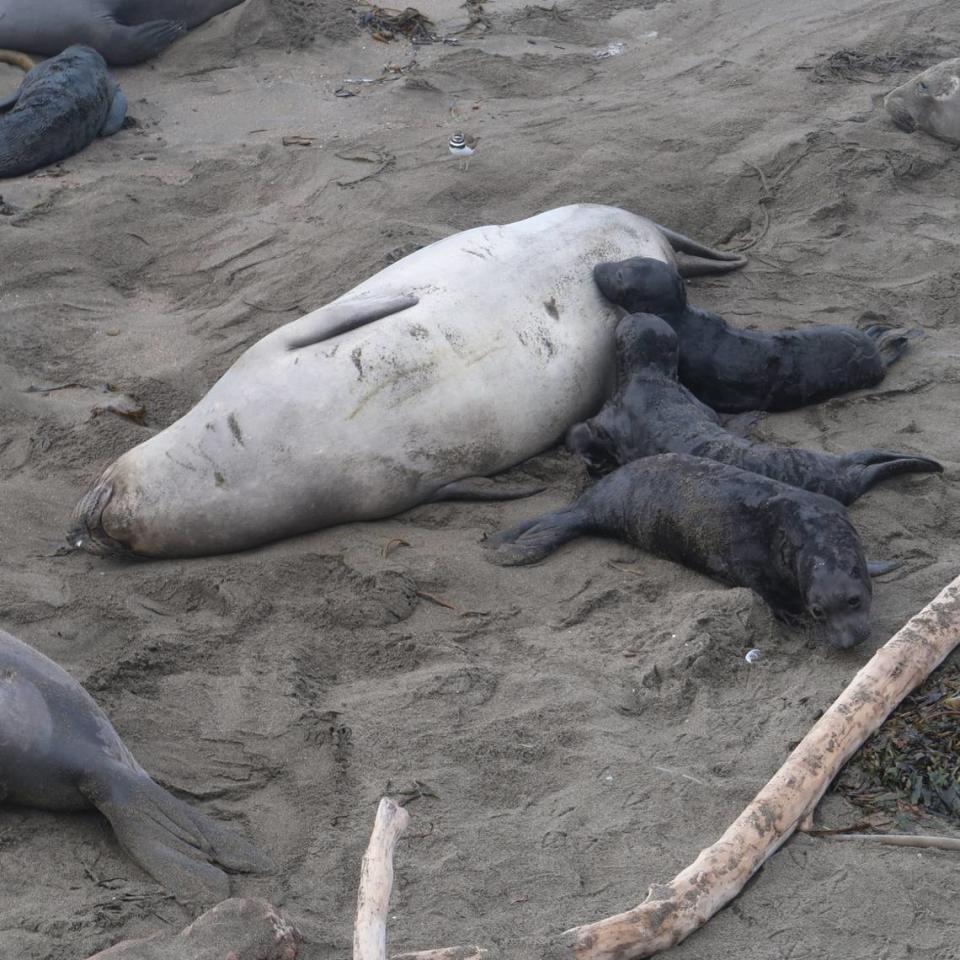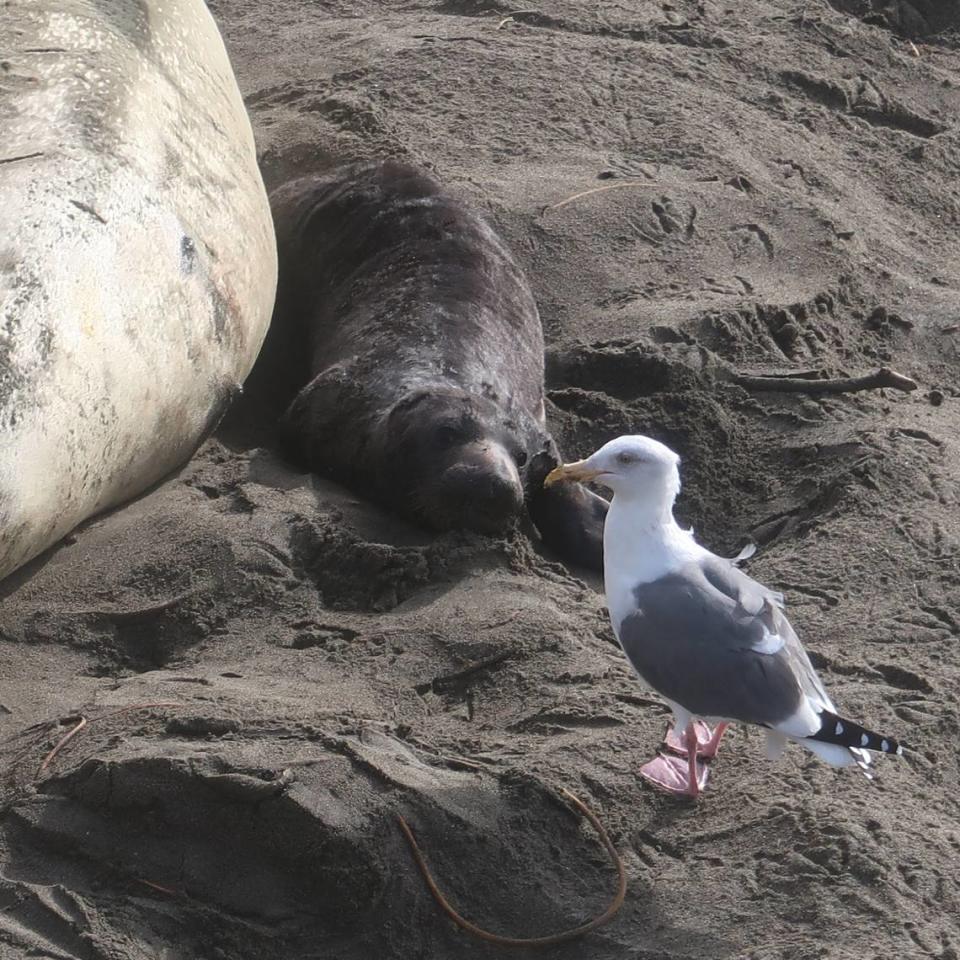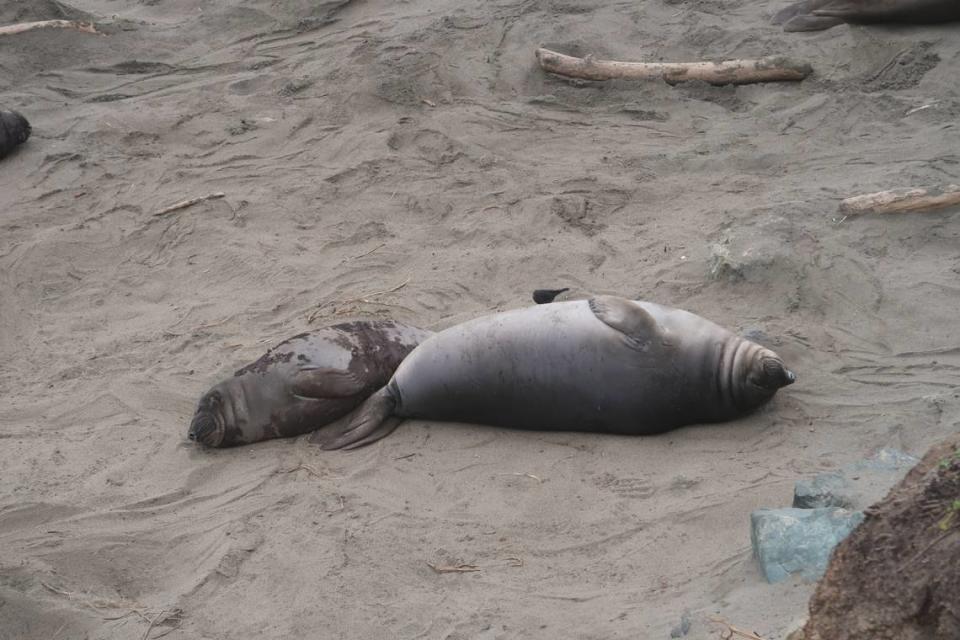SLO County high tides took a toll on newborn elephant seal pups — but hundreds survive
High tides have taken their toll on newborn elephant seal pups at the Piedras Blancas viewpoint, but hundreds survive.
They grow fast on high-fat milk. Every day, more weaned pups are left on the beach. Their mothers leave them to manage on their own.
That’s not a problem for the weanlings. They are fat and sturdy, making the transition to independent life. As they mature, their bodies change from rapidly gaining weight to eating nothing, and living off that blubber.
They grow from 75 pounds at birth to more than 200 a month later. Visitors can estimate the age of the pups by size alone.
Then they fast for the first time. All elephant seals have two long fasts every year in their annual cycle, while they are on the beach.
Their mothers are finished with their fast and ready to start feeding again after they ate nothing while nursing the pup. They are thin, and need to return to the ocean to forage and gain the blubber that sustains, protects and insulates them.
They will return in six or eight weeks, their healthy weight restored from nearly constant foraging.

Elephant seal mothers only have 1 pup — but you might see more around them
Elephant seal mothers have only a single pup.
Since they don’t eat while they are nursing, they don’t have adequate reserves to feed multiple pups. It’s common for pups to nurse on mothers other then their own, though.
Some mothers tolerate it better than others. Often mothers have several pups around them. Only one is hers.
Pups are at risk if they get separated form their mothers. Mother-pup separation is the most frequent case of pup death, although over 90% of the pups born at Piedras Blancas survive.
Watching a pup search for its mother is heart-rending, but often a persistent pup will find its mother — or some mother willing to nurse it.
Mothers whose pups were washed away by high tides may adopt a pup, or at least be willing to let a hungry one nurse. Inexperienced mothers can become better mothers.

What else is happening at SLO County elephant seal beach?
Visitors see a wide range of development at the viewpoint.
Some females are still arriving at the beach to give birth, while other mothers have completed their maternal duties.
Females mate with bulls before they leave the beach. Mating can be noisy, with the female barking and flapping around. Other bulls may take interest and chase the bull attempting to breed. Fights break out.
Gulls are also a part of the beach ecosystem. They gather to consume the afterbirth, and clean up any pups that died. One might even insist on stealing milk while a pup nursed.
Meanwhile weaned pups congregate in groups called pods, out of the main breeding areas, along the base of the cliffs.
Look for rotund seals with black skin peeling off. They shed the black coat they were born with after they are weaned. It reveals their first countershaded coat, dark on the back and light on the belly.
As the adults leave, weaned pups have more space to gradually make their way to the water.
Their next developmental task is to learn to swim and dive. They are more likely to be in the water at night, so early mornings and late afternoons are the best time to see them splash around and put their heads underwater to hold their breath. Most will leave the beach on their first migration by the end of April.

Will King Tides impact elephant seal beaches?
King Tides will inundate the beach again Feb. 9.
Fat weaned pups will be safer than newborns. Most of the seals are farther away from the water’s edge, but high tides always threaten some pups.
The California Coastal Commission encourages the public to document the extent of King Tides with photographs and share them online at coastal.ca.gov/kingtides

